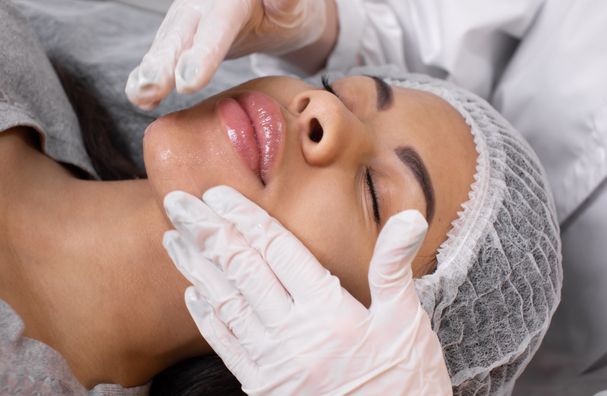Have you ever looked in the mirror and wished for better cheekbones? Have you ever envied people with strong chins or well-defined jaw lines? Facial augmentation may be an option for you.
Implants can add balance, proportion and definition to virtually any area of the face, although they’re most commonly used in the cheek, jaw and chin. For certain individuals with weak chins, we can surgically move the chin bone into a more prominent position.
Let’s explore your choices.
What is facial augmentation?
Facial implants are specially formed solid materials that work with your bone and tissue to enhance, or augment the physical structure of your face. They can be made from a variety of materials; I prefer a firm, porous, high-density polyethylene called Medpor. Silicone implants are another option, but they hold a higher risk of moving out of position or becoming incorporated into the surrounding bone tissue.
We can correct many structural imperfections with implants. Cheek implants can increase the projection of and add volume to the cheekbones. Jaw implants can increase the widths of the lower third of the face. Chin implants can increase the size and projection of a small or recessed chin. All of these implants may be performed alone or in conjunction with other procedures, such as facelifts or nose or ear surgery.
Some patients, especially younger people with significantly weak or recessed chins, may be better off with a chin osteotomy, where the chin bone is surgically cut and repositioned. Once the bone heals, it will stay that way forever, whereas a too-large implant may move over time. You’ll also get the look you desire using only your own tissue, without artificial materials that carry a risk of infection. These benefits may make this bigger, more complex procedure worth it for some people.
What happens during these procedures?
Both procedures are done on an outpatient basis, in either a hospital or surgical center.
For facial implants, an incision is made to create a supporting pocket beneath the skin and soft tissues. The incision is usually made inside the mouth, along the gum line, although for some chin implants an incision just beneath the chin may be more appropriate.
Once the implant has been positioned in the pocket made by the incision, the implant will be held in place by the muscle and tissue surrounding that pocket. Occasionally, I’ll further stabilize the implant with sutures or surgical screws.
For an osteotomy, I make an incision through the mouth, along the gum line in the lower lip. I surgically cut the chin bone and reposition it as desired. I then secure the bone in its new position with titanium screws and plates.
What should I expect post-surgery?
If you’ve had an implant, your pain will be minor, but you’ll have bruising and swelling for the first seven to ten days. If your incision was made through your mouth, you may be restricted to a soft food diet in the beginning, to help the wound heal and for your comfort. Within two weeks, you’ll be back to your normal activities.
If you’ve had an osteotomy, your recovery will be longer and you’ll have more bruising and swelling. There’s also a risk of temporary numbness in the lip and chin. Still, you’ll be back to all your normal activities within two to three weeks.
As your swelling subsides, you’ll begin to notice newly defined facial features, natural angles, and visible contours. And you’ll feel more comfortable with and confident in your looks.
Imagine what you’ll think when you look in the mirror following your procedure. Call the office today to schedule your consultation, and let’s discuss what options are best for you!
Health Topics:







